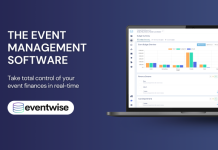Growing up in Nova Scotia, Natasha Hillier always worked in the family business whenever time would allow. Her family’s entrepreneurial spirit inspired her to seek out a Bachelor of Commerce degree and McGill University seemed like a natural fit. After graduating with a B.Comm, triple concentration in Entrepreneurship, Global Strategy and Labour Management Relations, she headed back to Nova Scotia and started with Marcato Digital in the Sales Department. After a few years of working with and supporting the clients that she sold the product to, she found her true passion in Customer Satisfaction ensuring that clients had the best possible experience. Before long she became the manager of the Customer Satisfaction Department, then the Chief Product Officer and then in 2016 she became the Chief Operations Officer.
In an industry where technology is evolving at a rapid rate it is important to keep your finger on the pulse so you don’t miss an opportunity to reap the benefits for your festival or event.
In order to successfully adopt and implement these new technologies there are a few key steps you should take both leading up to, during and after the adoption of new technology. This four-part series will cover the key things you need to consider in order for your organisation to successfully implement new tech and realise a return on your investment.
Part 1: Preparing Your Organisation to Adopt New Technology
All too often we see organisations jump right into making a purchasing decision about technology without having done the groundwork ahead of time. This is a common mistake but one that often leads to issues that aren’t realised until it is too late. Ideally you want to consider the following points to ensure you have the information you need to make the best possible decision for your festival or event.
Talk to your team
It may seem obvious, however it is one of the most important steps, especially if you work on a relatively small team. If you are thinking about adopting a new technology, chat with your team to see what they think. Not only will this help them feel included in the process but they may have valuable feedback on the idea that you would not have thought of otherwise. Just by taking time to consult with them you can reduce or eliminate the resistance that we often see when new technologies are pushed upon staff with no notice or consideration.
Understand your current technology situation
Depending on the type of technology you plan on implementing, you may need to dive deeper into understanding your current technology situation. Asking your organisation the following questions can help determine if you are wasting time, money or resources with your current technology situation. It will also help determine where the gaps are.
1. How many different programs am I using?
2. How much time is spent switching between them?
3. Is everyone using the same system(s)?
4. How much am I currently spending on tech?
5. How consistent is my data across my systems?
6. How often are you entering the same data in multiple places?
If you are in charge of the implementation you need to take the time to understand the specific use cases that are a reality in the planning process and a big part of that is understanding the current situation. You might think you have a strong understanding of what is being used and for what, but it only takes one key feature to be missing to reduce the positive effect of the implementation, which leads up to the next point.
Perform a needs assessment & keep your eye on the prize
Whenever you are adopting new technology, it is usually to solve a particular problem. For example, your ticketing fees are too high, it takes too long to update information on the website or the mobile app you used last year was difficult for patrons to use. You want to always keep the core problem you are trying to solve in mind throughout the process as all too often organisers get sidetracked by shiny new features and forget the reason they started looking for tech in the first place.
That is why a needs assessment is so important. You want to talk to the stakeholders on your team that are impacted by the problem you are trying to solve and really understand what the requirements are for this technology to fix it. When you are discussing it, make sure you separate needs vs. wants. It is easy to get caught up in listing off all the things that would make your job easier but that is going to make finding a solution with every single one of those things difficult. If you have separated needs and wants you can focus on finding something that fits your needs and if it satisfies some of your wants as well then that is a bonus.
Another thing to watch out for is that when performing a needs assessment people focus on the things they want that they don’t currently have, but forget to document the things they have that are working. This can lead to adopting a system that is missing some core functionality even though it has some nice new features.
Manage expectations
Whenever performing a needs assessment, you need to ensure you are managing expectations throughout the process as well. As previously mentioned, if you tried to find technology that had every single need and want on the list you might be looking for a long time. That said, talk to your staff about the reality of adopting new tech, explain that you are going to do your best to find something that satisfies all of the needs but realistically it is more common that you will find something that satisfies 80 – 90% of them. By discussing this right from the start, it will reduce the disappointment or resistance to the new tech if it doesn’t have 100% of the things discussed in the needs assessment. Many times we have seen someone in the organisation reject the new technology because it was missing one small thing they asked for and failed to realise it still solved 90% of the other issues they were having.
Take, for example, if you have a car with 10 broken things and you bring it to a repair shop and they say they can fix nine of the 10 things. Would you just throw the car away? Or would you have them fix those nine things and then try and find another repair shop to fix the other? The answer actually depends on the importance of that 10th thing. If it is a core piece of functionality such as the transmission, perhaps you should find a shop that can fix that first before fixing the nine other things. Whereas if it was just fixing a scratch in the paint, perhaps it is something that can be addressed in another way by someone who specialises in that specifically.
Budget for new technologies
Technology in the festival / events industry is constantly improving and developing. If you want to be able to take advantage of these technologies then you need to make sure you have considered those costs in your annual budget. Many times we have seen organisations that could really benefit from a piece of technology but weren’t able to adopt it at the most crucial time in their planning cycle due to budget issues. By allocating a budget to technology adoption it will give you the flexibility to take advantage of new things as they come up rather than waiting until the next year.
Now that your staff is ready to adopt new technology and you have a great understanding of what your team needs, it is time to start the purchasing process.
Check out part two here, in which we cover some tips for ensuring you make the best purchasing decision quickly enough to realise a return on your investment.






